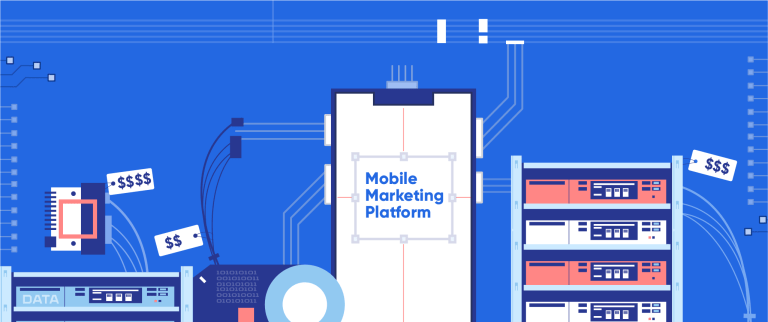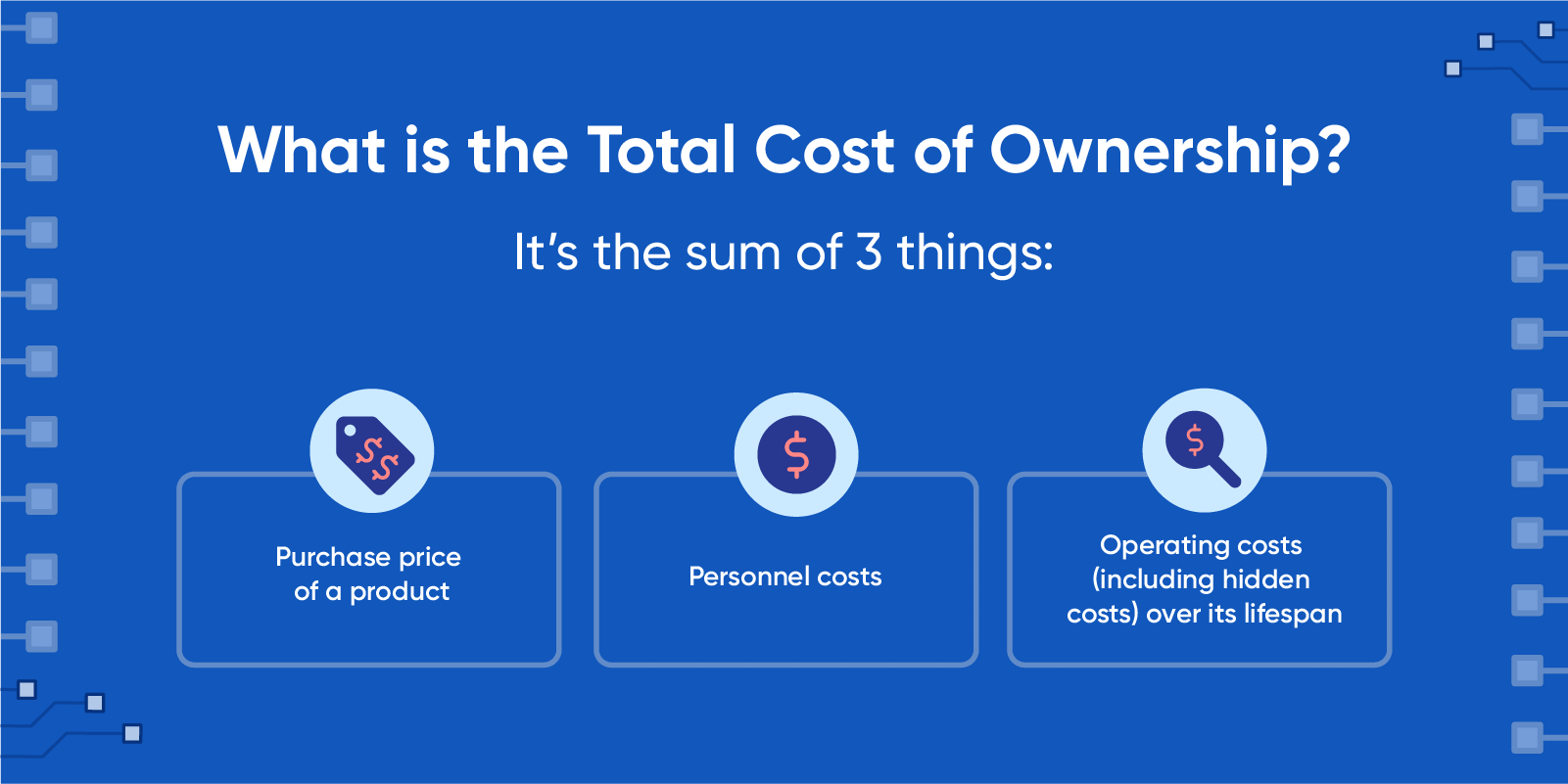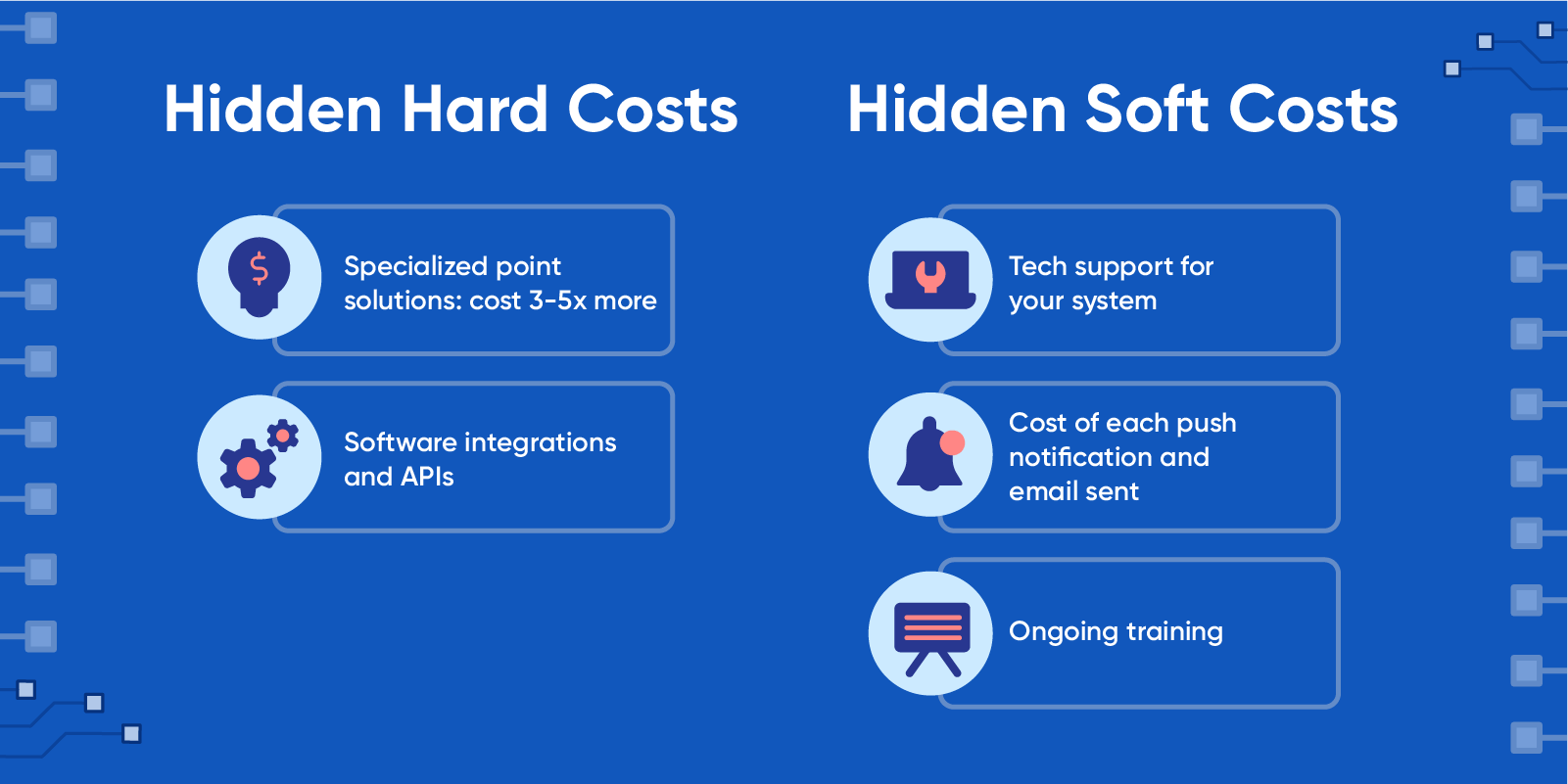Learn how you can Unlock Limitless Customer Lifetime Value with CleverTap’s All-in-One Customer Engagement Platform.

As a modern marketer, you more than likely have a full marketing technology stack of solutions that assist you in customer engagement and retention. You may have a CRM alongside an email service provider, a content distribution network, possibly even omnichannel components that allow you to reach customers via email, push notification, SMS or social media.
But do you know what your total cost of ownership is? When you add up all the monthly costs of managing and maintaining your martech stack, do you also know what the hidden costs are?
The total cost of ownership (TCO) refers to the sum of the purchase price of your asset plus all stated and hidden costs necessary to operate your marketing tech stack.
When choosing a point solution to purchase for your tech stack, you must step back and look at the bigger picture of what that product is and its total value to your marketing organization. You cannot base your purchase decision simply on the short-term price of the product, you also need to look at its long-term maintenance costs.
The product with the lower TCO is the one that gives your organization better value in the long run.
As marketers, you are tasked with reaching prospective customers, converting those prospects into users and paying customers, and then engaging those customers so you retain them. All while driving measurable, repeatable revenue streams.
And with this current period of volatility, your marketing team is limited by the grim reality of dwindling resources. Suddenly you’re being asked to do much more, but with less of everything! There’s less budget. And there’s less manpower if you’ve been subjected to layoffs and reductions in force.
In this climate, looking at the total cost of ownership is even more imperative than before.
Before this global health crisis, marketing was tasked with building and maintaining a full stack of specialists and point solutions. These were typically cobbled together to form a complete suite of engagement and retention tools that fit your needs to a tee.
What you need to realize is when you add any of the above point solutions to your tech stack, there are always hidden costs underneath — costs that will show up in addition to the monthly fees that are involved in getting these tools up and running and then maintaining them.
Just as in a construction project, we can break them down into hidden hard costs and hidden soft costs.
Hidden hard costs are those that drive your TCO up due to the actual software you purchase and the additional tools you need to make full use of it.
For example, the specialized point solutions you buy will normally cost 3 to 5 times more than an overarching platform. Then, specialized software integrations and APIs may add to higher running costs for the product you’re adding to the tech stack.
In addition, hidden soft costs are those where your TCO goes up due to usage and maintenance.
For example, you may need to pay higher amounts for ongoing tech support of all your separate systems.
You will also incur extra costs for sending out emails and push notifications. Unless your platform has a specialized relationship with email or push vendors, you may end up paying the retail cost for each push or email sent, instead of a wholesale price. And when you start talking about messaging millions of users around the world, that’s a painful hidden cost to deal with.
And as your purchased solutions get upgraded or additional team members added (not to mention transitioned to new roles in your organization), there will be a need for ongoing user training in order to maximize your system.
Every little bit adds to your operating cost.
But there’s another problem with point solutions that is rarely discussed, and which you may only find out about after you purchase the system: you lose out on unseen opportunities.
The point solutions you use may be integrated and may fit your specific needs, but they aren’t all under one roof. That means there is an inevitable delay in data sync as it takes a minimum of 3 to 5 hours for these systems to talk to each other and then update your customer database.
Here’s where the difference between real-time accessible data and real-time actionable data comes into play. Real-time accessible data allows you to see the real-time activity that your customers are engaging in. Except you can’t do anything with it until your point solutions fully synchronize.
That’s 3 to 5 hours later!
What happens when you have a compelling or time-sensitive event taking place, and you need to reach a specific set of your customers? Those hours means you’re late to the game. You lose out on revenue when you can’t reach customers with the right message at the right time.
What you want is real-time actionable data — data that you can immediately act upon as the opportunity presents itself.
You’re seeing that new mobile app users aren’t purchasing within an hour of installing? Send out a push campaign to entice them to buy.
Or your pandemic campaign is tanking right now? Pivot ASAP and send an alternate message to the remaining users in the target segment.
So how do you eliminate the problems that come with these specialized point solutions? How can you reduce the TCO and still use the best tools to engage and retain customers?
What does the right platform look like? It looks like CleverTap.
If reducing the total cost of ownership of customer engagement and retention solutions at your organization is a PRIORITY and is worth 20 minutes of your time, then contact us. We’ll give you a personalized walkthrough of how CleverTap is the ideal platform for you.

See how today’s top brands use CleverTap to drive long-term growth and retention